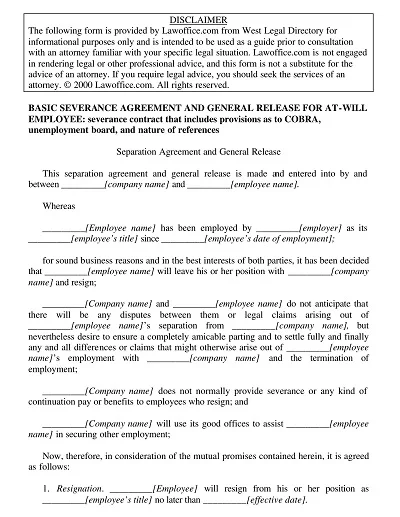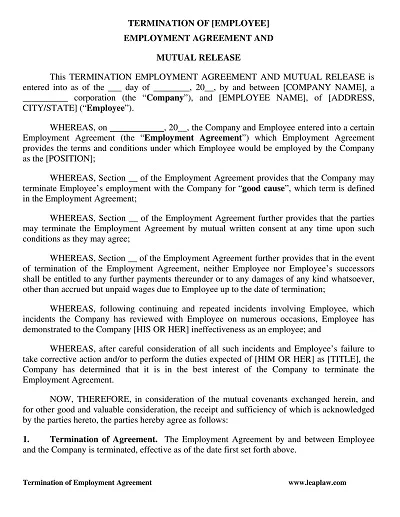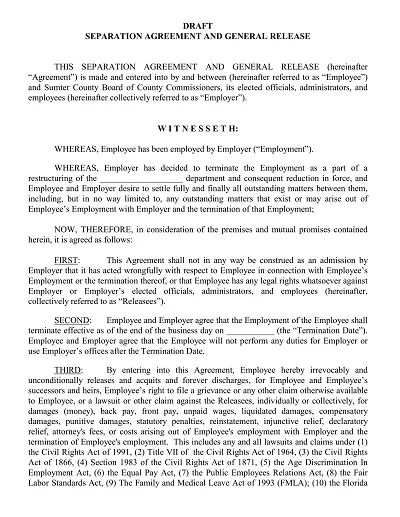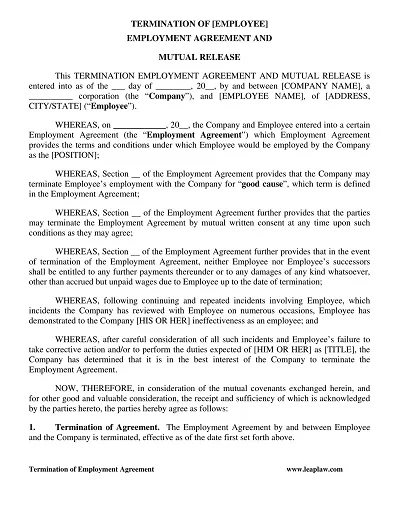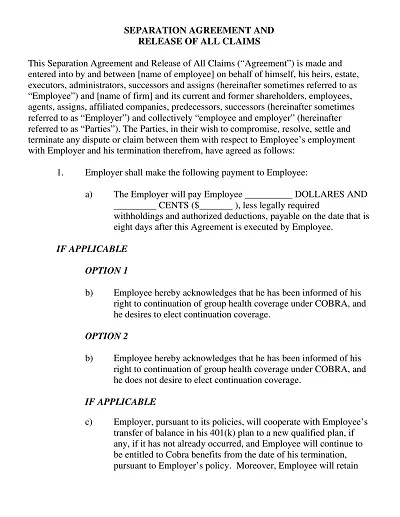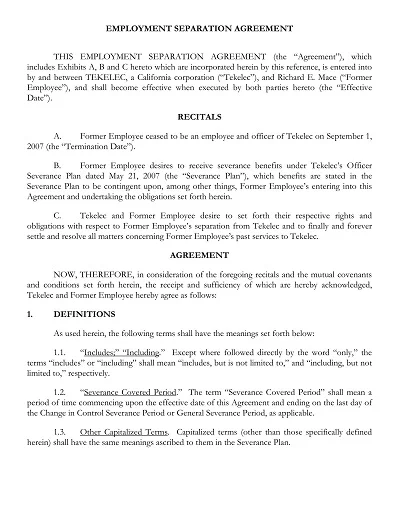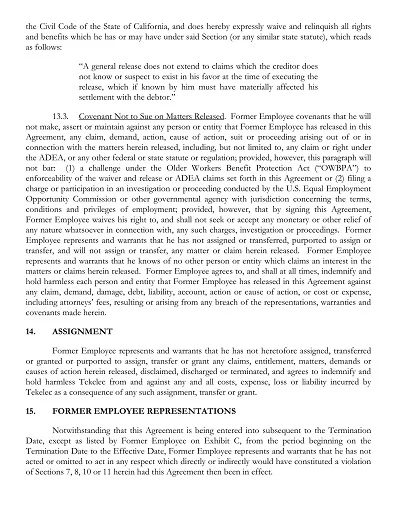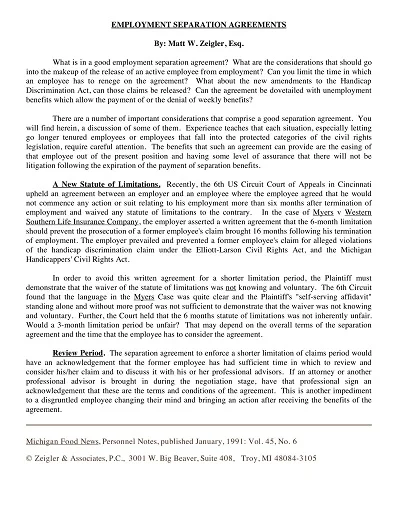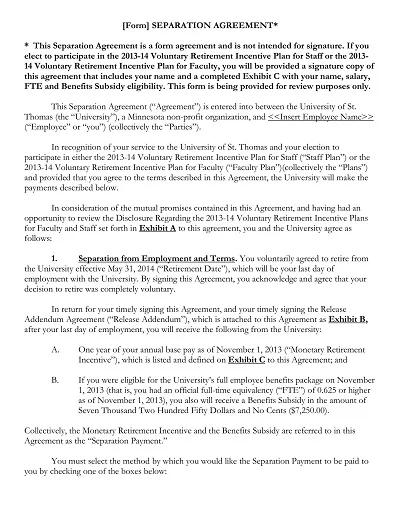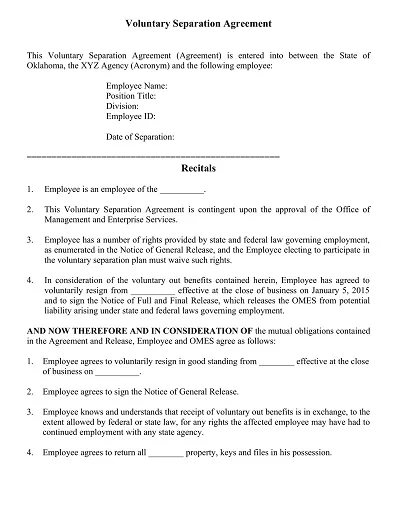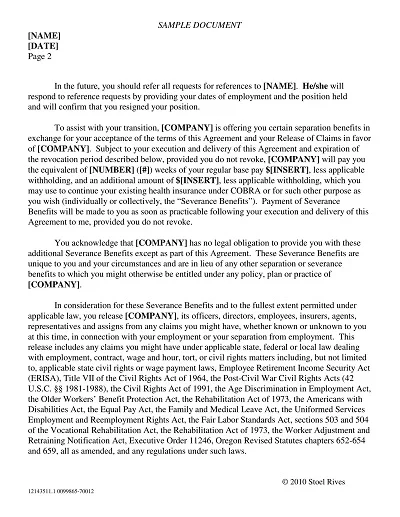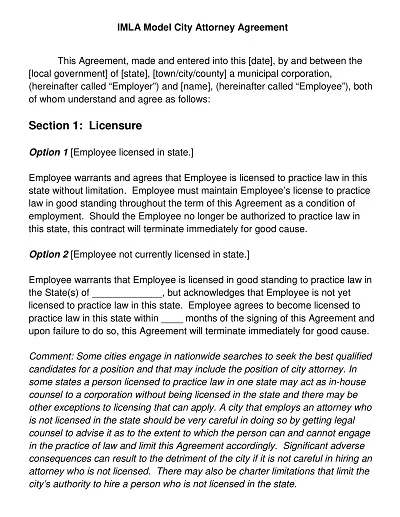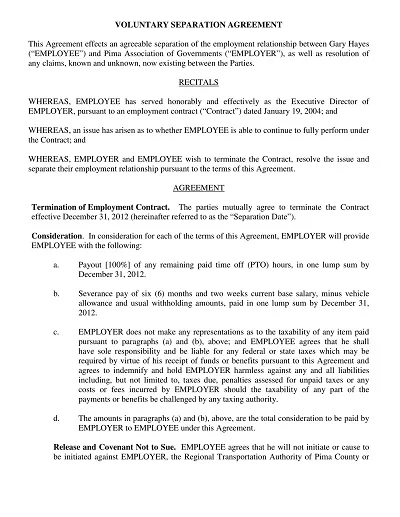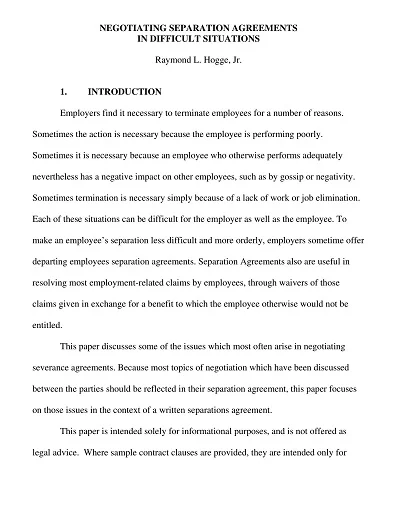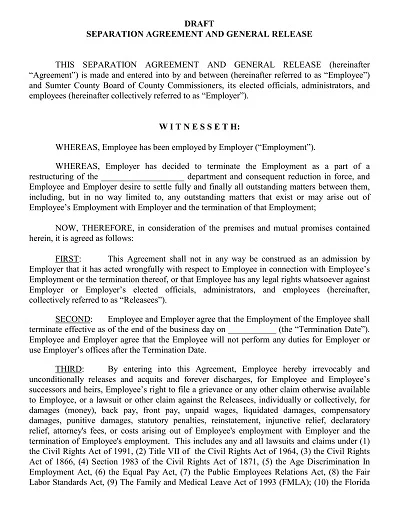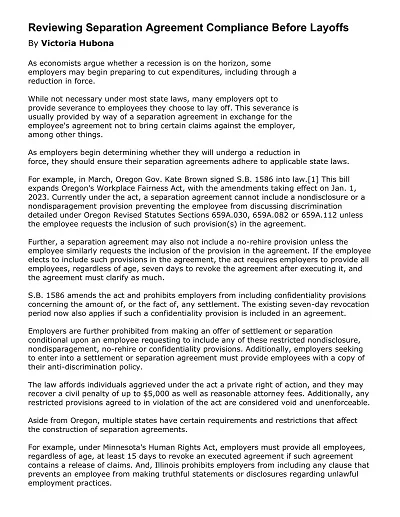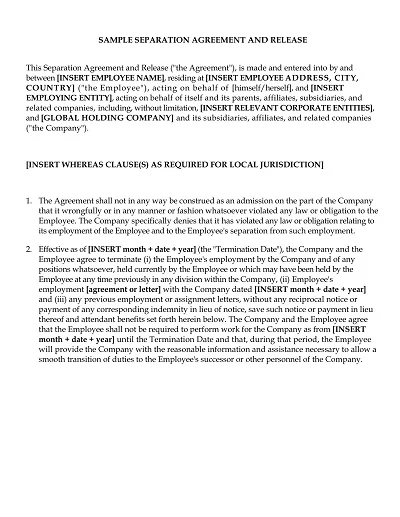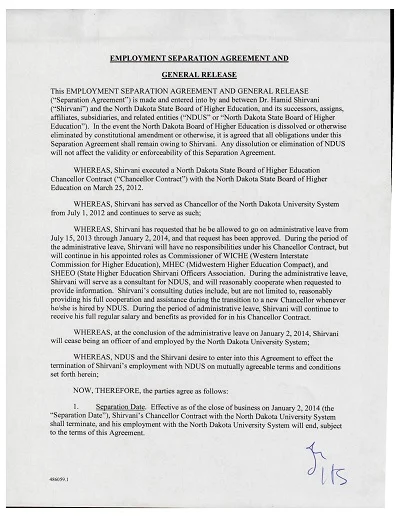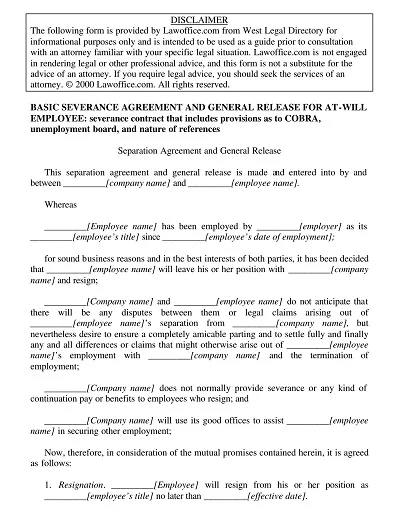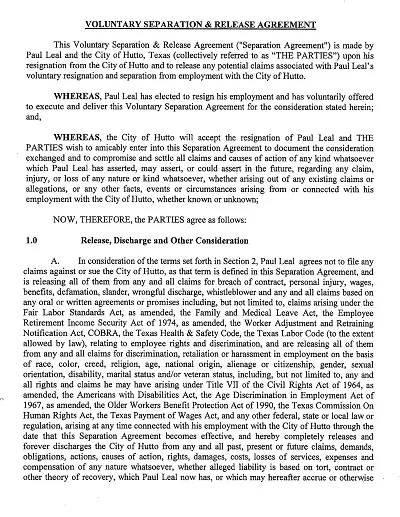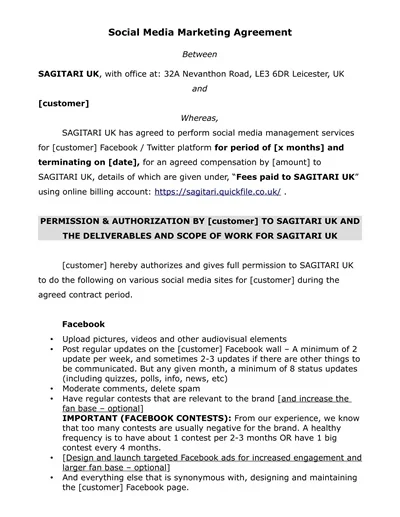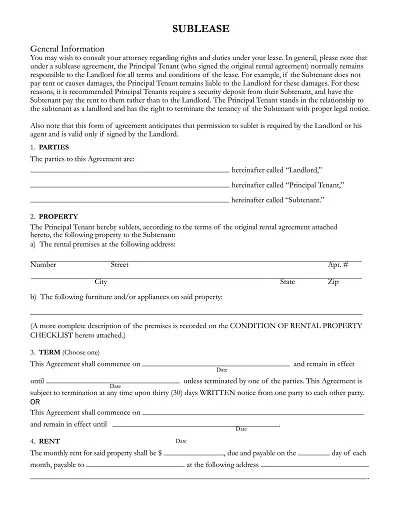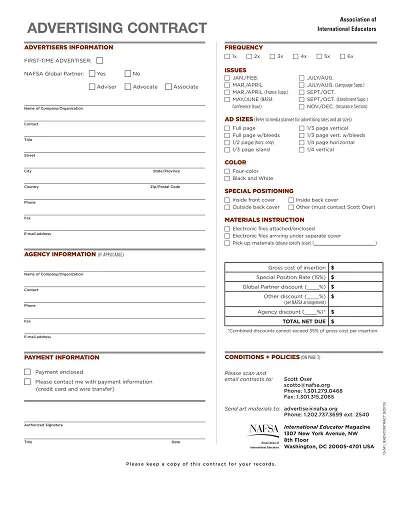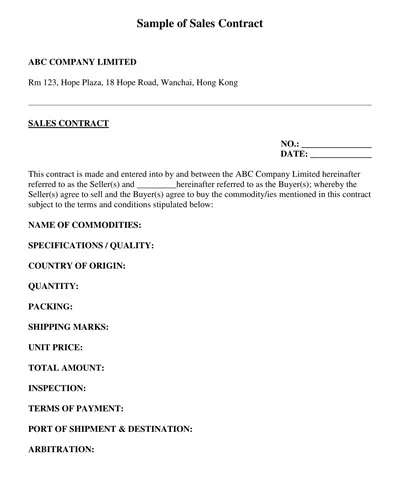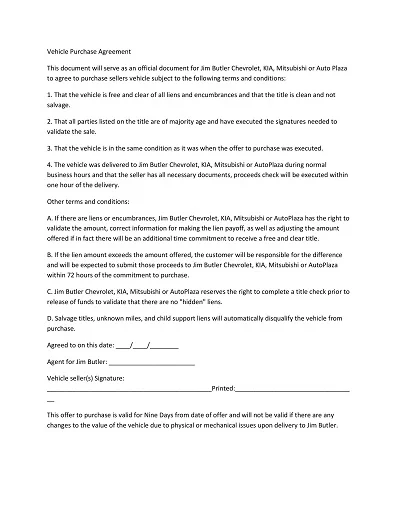An Employment Separation Agreement Template is a legal document used to create contract forms to be signed by the employees, which state various aspects concerning the employee’s resignation or dismissal from the company. It may contain provisions on how to pay the severance pay, requirements for the eligibility of certain circumstances, and the signed non-disclosure, non-compete, and/or release of the employee’s legal rights against the employer.
This is a legal agreement, and it protects both parties. Details on the terms of the separation are put in place, thus reducing the chances of disagreements. Using a template can also be useful because it is the starting point that can always be tweaked based on the circumstances of the particular employer and employee.
Download Free Employment Separation Agreement Templates
What is an Employment Separation Agreement?
An Employment Separation Agreement, also known as a “termination agreement” or a “severance agreement,” is a legal form, This is essentially called a contract of termination as it is signed between the employee and employer. Specifically, this document may provide terms of the parties’ remuneration, bonuses, or any other kind of payment of matters concerning severance or benefits for whichever party in question is privileged, and non-disclosure and no-derogatory statements clause and sometimes non-compete clause if permitted by law.
It provides the parties with a clean separation regarding the kind of termination allowed under the contract. It normally includes provisions that protect the individual interest of the employee and the employer and a warrant for the employee against the employer.
Benefits of a Well-Drafted Employment Separation Agreement
Actually, termination of employment is in the best interest of both the employer and the employee when done under a professional separation contract.
Here are some key advantages:
- Risk Management: This reduces the chances of future legal actions based on perceived unfair dismissal by providing precise legal terminations of the employment relationship.
- Clarity: Regarding the payment structure, the agreement’s provisions are obvious on matters related to severance pay, benefits, and other forms of remuneration owed to the employee, hence curtailing the possibility of disputes.
- Non-Disparagement: Common terms include provisions regarding the non-criticism of the other party and the mutual protection of reputation.
- Confidentiality: They often integrate provisions that maintain the confidentiality of company information once the employee leaves.
- Return of Property: The agreement can provide details of how the business assets can be retrieved to avoid jostling when one party takes over from the other.
- Non-Competition and Non-Solicitation: Some may prohibit the employee from legally competing with the company or taking its clients or employees for some time.
Components of an Employment Separation Agreement
A dismissal agreement is another crucial contract that outlines all the procedures that must be followed by an employee upon termination of his or her employment contract.
Here are the key components typically included:
Termination Clause
- Reason for Termination: This is particularly important if the termination of the employment has been fixed, as this should also state the reasons for the termination, whether voluntary or compulsory.
- Effective Date of Termination: The employment terminated date is the specific day the individual is terminated and no longer employed at the organization.
Compensation Details
- Final Paycheck: Data about the sum of money and the latest paycheck for the last working day.
- Severance Pay: Information regarding how any losses, where severance pay is applicable, will be addressed.
- Accrued Benefits: You must include any unused vacation time, personal days, or sick days that must be made up.
Release of Claims
- General Release: The employee releases the employer from legal proceedings, meaning the employee will not take the employer to court.
- Specific Claims: Provides information on any specific releases that are being made.
Confidentiality
- Non-Disclosure Agreement: Provisions relating to trade secrets belonging to the employer upon the termination of employment contracts.
- Return of Property: Return of assets that belong to the company among the conditions on the employee.
Non-Compete and Non-Solicitation Agreements
- Non-Compete Clause: Restrictions on what the employee can or cannot do within or outside the organization during a stipulated period.
- Non-Solicitation Clause: Barring extra requests from the employer regarding seeking clients or employees.
Legal Provisions
- Governing Law: The legal framework that provides the rule under which the agreement is formed.
- Dispute Resolution: Other matters, which include methods of how they will be able to solve other disagreements in the future.
These components disclose a clear and just relation between the master and the worker at the time of the separation and, thereby, may minimize the possibility of future conflicts.
Tips for Handling Employment Separation
Employment separation should be done professionally and with consideration since it can affect the employees and employers.
Here are a few tips:
- Communicate Clearly: It is important that every time the couple wants to part ways, the reasons why they are separating should be communicated civilly. People should, however, be discouraged from using technical terminologies and, where possible, be allowed to be as open as possible without violating privacy laws.
- Follow Legal Protocols: It is thus relevant to respect strict obedience to the legal provisions without compromising the firm’s protocol to ensure that the parties do not have any conflicts or misunderstandings. Ensure that you record every activity from when the decision to separate to when the separation happens.
- Support the Employee: It is convenient to provide career advice concerning the transferee or direct the individual to employment services to help him/her secure better employment.
- Maintain Confidentiality: Do not disclose the particulars of this incident to anyone outside a necessity. This should be done only in the presence of those who should be informed to preserve the confidence of everybody involved.
- Conduct Exit Interviews: Exit interviewing is a powerful tool for getting constructive criticism and understanding what can be changed in the organization.
How to Create an Employment Separation Agreement Template
Having established the purpose of an ESA, the next step in drafting an Employment Separation Agreement template is to identify the core tenets that safeguard the employer and the employee.
The agreement should include:
- Introduction: Begin with the date of the agreement, the names and the addresses, the employer and the employee.
- Termination Details: Always clearly identify the contract’s termination date and provide any other information related to the termination.
- Compensation and Benefits: Explain any severance pay, a continuation of any benefits, or other compensation to which the employee is permitted.
- Return of Property: A section needs to explain how company property should be returned by the employee.
- Confidentiality: Include terms that protect both the employer and the employee from claims of violation of privacy and disclosure of restricted information once the deal is over.
- Non-Disparagement: State any provisions that bar the employee and the employer from making unfavorable statements concerning one another.
- Release of Claims: The employee also forfeits any future rights he/she may wish to claim against the employer.
- Governing Law: Identify the state laws facilitating the agreement’s understanding, implementation, and enforcement.
- Relevant Signatures: As usual, provide space for signatures and dates for both parties.
It should be made clear that the template should allow for the input of new and variations, as employers and employees may agree on different terms for employment. The legal counsel will ensure that the complete template conforms to local, state, and federal laws.

